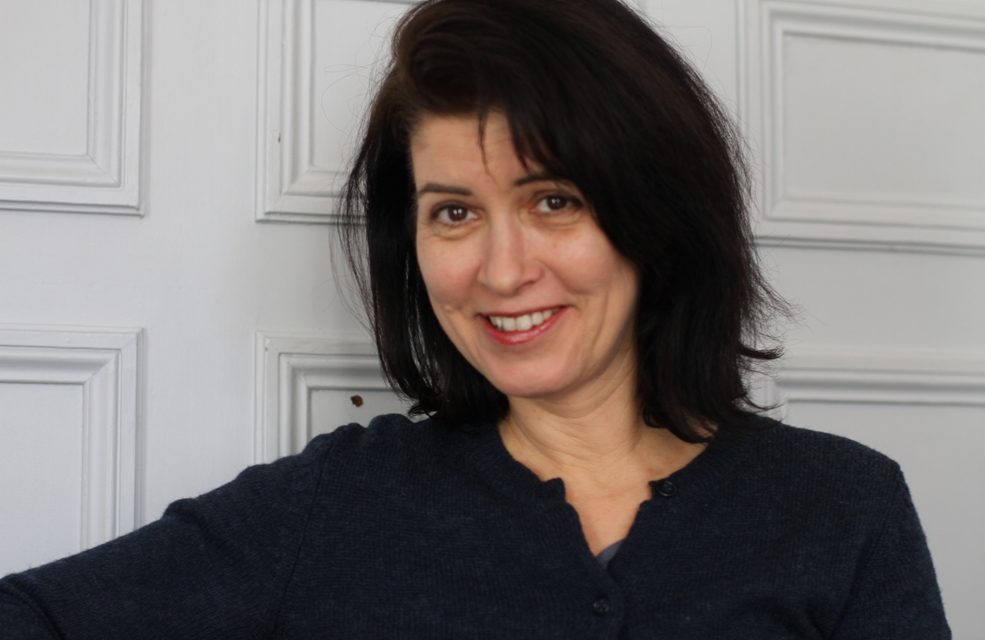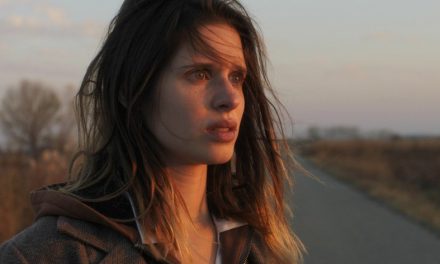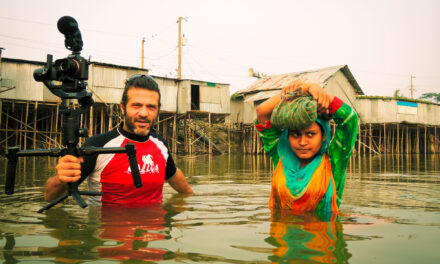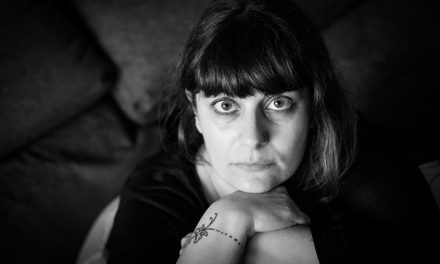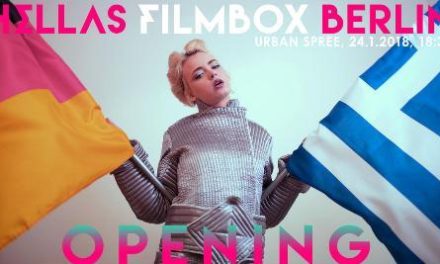Iro Siafliaki was born in Thessaloniki. She studied Cinema at E. Hadzikou Film School (Athens) and Philosophy at Sorbonne University (Paris) and holds a PhD on Art, Philosophy and Aesthetics Studies. Her filmography includes : “Zones and passages” (2018, 109’) ; “I remember tomorrow” (2015, 9’) ; “Geneviève Clancy, Instants of Life”(2013, 76’) ; “Nights” (2010, 20’) ; “Nico Papatakis – A portrait” (2009, 45’ co-directed with Timon Koulmasis) ; “Michalis” (2007, 26’ co-directed with Timon Koulmasis) ; “Martha” (2006, 26’ co-directed with Timon Koulmasis) ; “Passing by Jenine” (2005, 10’) ; “Meeting G.C.” (2005, 15’) ; “Exils” (2005, 58’) ; “Ways of Rebetico” (2003, 64’ co-directed with Timon Koulmasis) ; “Kontra-tempo” (2002, 30’) ; “Sinasos, a survey of memory” (1997, 60’ co-directed with Timon Koulmasis) and “Invention” (1990, 20).
Iro Siafliaki was interviewed by Greek News Agenda* on the subject of her latest documentary “Zones and passages”, a film aboutprecarity as a result ofthe economic crisis in Greece, but also about the movements triggered by the resistance to this new situation of uncertainty, insecurity and exploitation in the Greek job market. Siafliaki talks about the artistic choice of having VIOME factory workers film a big part of their story themselves, subverting the terms of cinematographic narration in the same way they deconstucted the old hierarchies and operated in terms of direct democracy in their work place and their life. Siafliaki also elaborates on the means she used in order to avoid approaching poverty and unemployment as a spectacle.
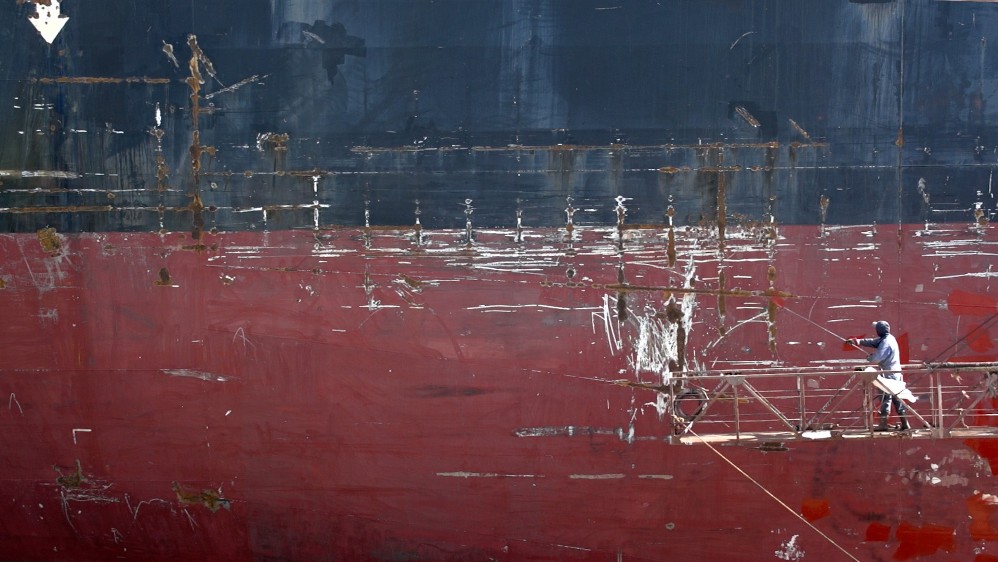
“Zones and Passages”, dir. Iro Siafliaki (2018)
What prompted you to make this film?
The starting point of the film was our need to contemplate on an extremely pressing situation, the notorious crisis.We believe that the problem of unemployment and that of labour conditions, which is already very acute, lies at the heart of this crisis. Or, as philosopher Anselm Jappe says in the film: A society where you have to sell your labour-power to live, unless you are the owner of capital, no longer needs this labour-power. We tried to film this as a catastrophic situation that risks becoming commonplace, banal, as well as the movements that experiment with ways to respond to it.
Moving from one situation to another is not easy, so the two parts of the film are very different to each other ; the poetic mode of the first part is followed by a totally different style of narration denoting urgency in the face of an emergency. In the first part, filming takes place in areas of Athens where the scars of unemployment are evident; the Shipbuilding Zone at Perama pose the question of what the impact of constant job insecurity on peoples’ lives is. What does it physically mean to those once toiling with both pain and pride to be now doomed to inaction?
In the second part of the film, the case of the VIOME factory in Thessaloniki that is self-managed by the workers themselves, subverts the concept of labour, workers deconstuct old hierarchies and operate in terms of direct democracy. It also refers to the conflict stirred by the particularly damaging exploitation of the gold mines in the Skouries forest, on the pretext of job creation. If the film ended with the Perama story, it would merely have concluded that that the job market has shrunk; by continuing with the efforts of resistance against resignation and people’s attempts to find themselves and others in this new landscape, the film takes the risk not to provide answers, but to leave the discussion open.
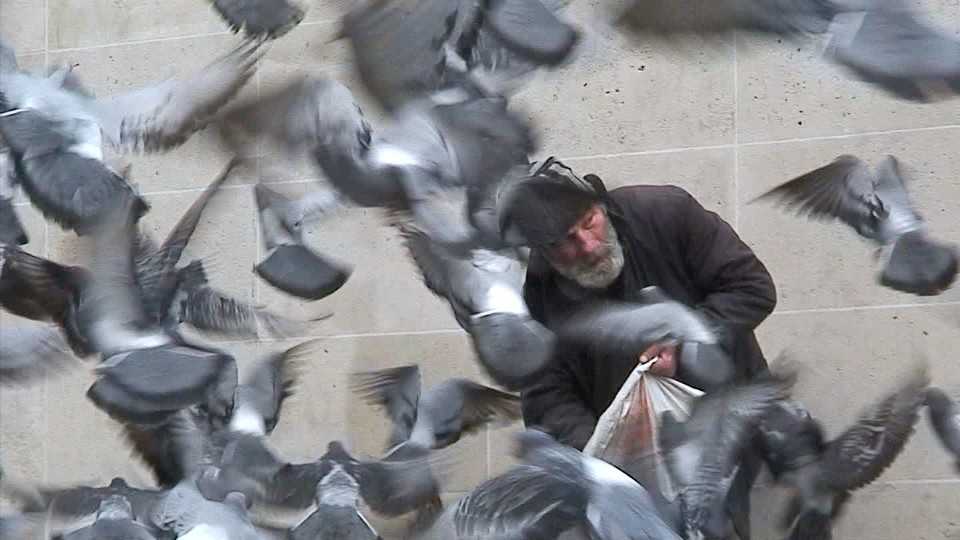
“Zones and Passages”, dir. Iro Siafliaki (2018)
Where are the results of unemployment felt more intensely, in French or Greek society?
Our view, as reflected in the film, is that although in Greece the problem of unemployment is particularly intense, the situation is not much better in France and elsewhere. We all see evidence of a new form of poverty progressively rising even in the more affluent countries where increasingly more people suffer from unemployement, while those who work are forced to work more and more intensively.Thus, while the film refers to the crisis situation in Greece, we have interposed scenes of the heated reactions against the 2016 controversial El Khomri Labour Law Reform in France.Let’s not forget the yellow vests movement currently underway in France, which is rising against precarity caused, among other things, by decreases in employment, austerity and the neoliberal deregulations entailed.
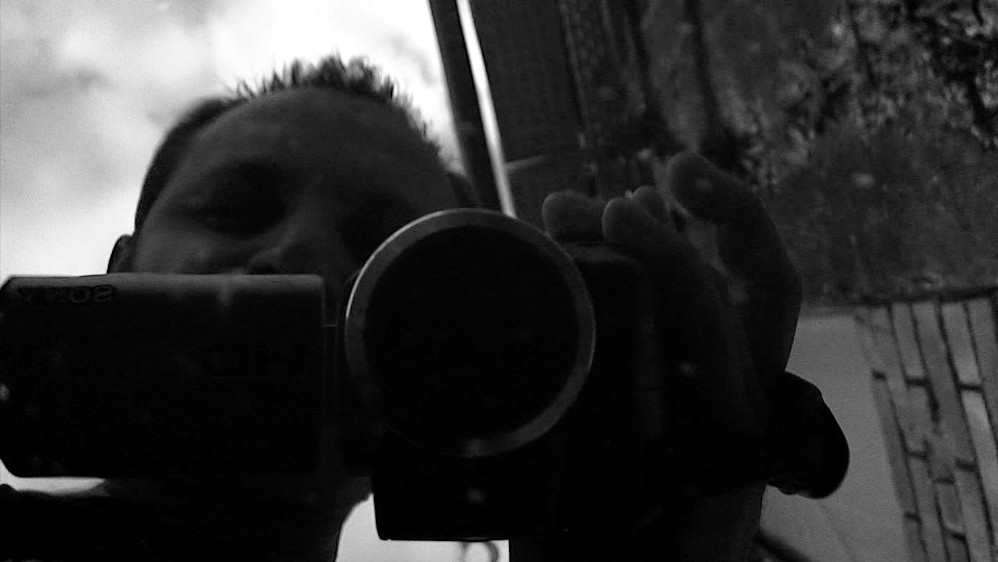
“Zones and Passages”, dir. Iro Siafliaki (2018)
In your documentary, the workers of VIOME experiment with self expression. Would you like to elaborate on that choice?
Preparing the part that concerns the self-managed VIOME factory was particularly decisive for the film. Since 2014-15, the film editor Bonita Papastathi and I have shared with VIOME workers talks, actions and slices of life. A year after our first meeting and realizing how their deeply political struggle was open to all aspects of life, we suggested the adventure of self managing their own image.
The idea of the participation of the subjects filmed in the construction of the film had been tested during the 60’s in the case of the Medvedkin Group in France. The workers voted in favour of the proposal in a meeting. While not self evident, there was a direct relation in the way VIOME workers subverted the normal work context and the way they subvert the relationship between subject and object in the filming process.
Depicting the filming process didn’t serve as a narration device. What we suggest by letting VIOME workers narrate their own story by filming it themeselves is the experience of a film that interferes with the whole film, as a documentary on the relationship of the employees with cinema and images. Filming some parts of the shooting process by the workers themselves (as for example when they suggest how it should be done or when expressing doubts or their critique on the initial editing) enabled us on the one hand to define a path and certain issues that had to be taken into consideration. On the other hand it made us change our preconceptions.
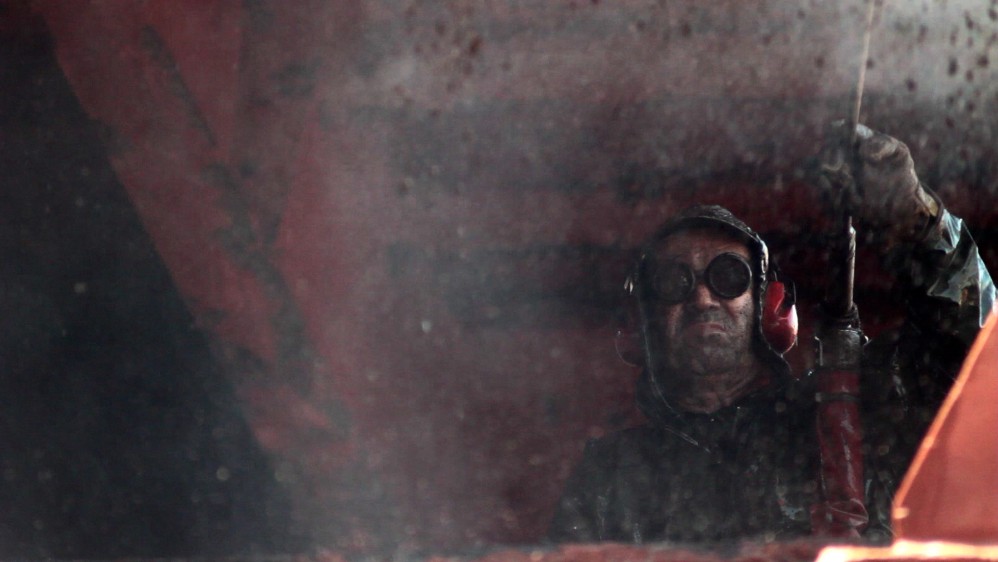
“Zones and Passages”, dir. Iro Siafliaki (2018)
How did meeting your protagonists influence you?
We devoted a lot of time to this film. It wasn’t easy to meet people truly unemployed or people being tested by theunclear boundaries of a temporary employment. During the four years of filming we came across situations and things different to what we were examining when preparing the script, while more came up in the editing stage. But I wouldn’t be exaggerating if I said that the film was co-built with all those who took part, and things that we may have felt would’ve gone unrecognized without their input. It is a very important experience when people entrust parts of their life to you and you move from your positions to “celebrate” this encounter.
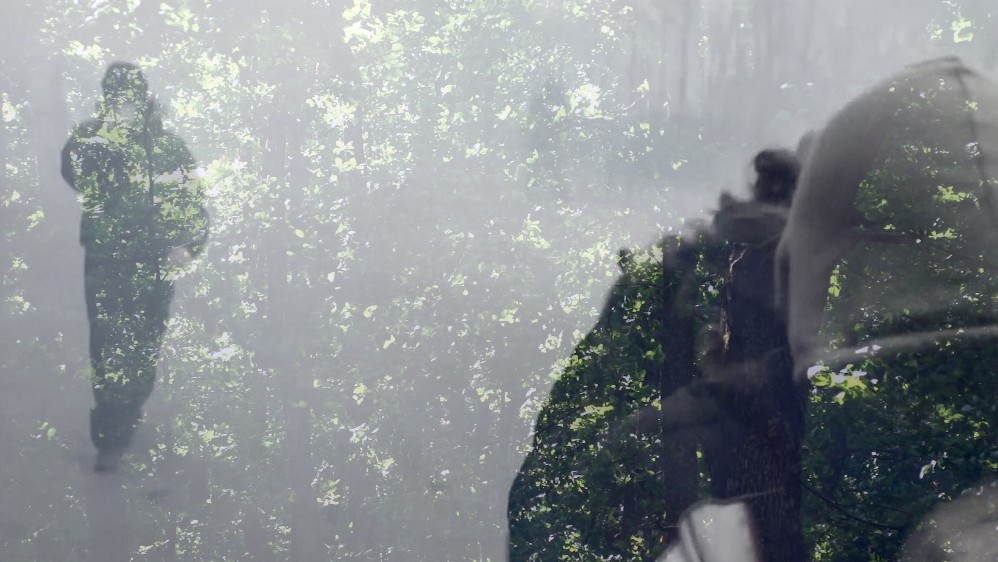
“Zones and Passages”, dir. Iro Siafliaki (2018)
In your documentary you show various forms of resistance. Do you think they are utopian?
It may be a bigger utopia to think that the crisis is temporary and that the situation will magically improve for all those condemned to poverty or for our planet itself. The radical thinking of those opposed to this allows at least prospects to remain open far beyond the “realistic” proposals that claim that increases in unemployment benefits or the development of technology will eventually solve the problem.
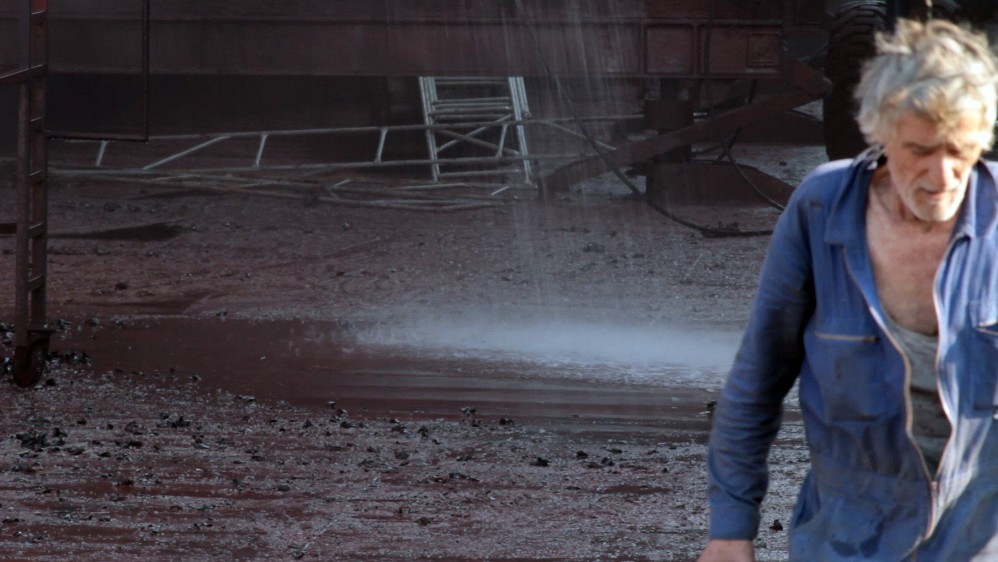
“Zones and Passages”, dir. Iro Siafliaki (2018)
How easy is it to avoid poverty-porn when dealing with issues of unemployment?
The difficulty with hot issues such as poverty is to ‘liberate’ them from systemic media spectacle traps that provide unforgettable ‘spectacles’ which these media themselves help to be forgotten. Quite often, the narration that accompanies the images, or the relationships that editing creates between them serve to distance us from the unbearable the moment it is exposed.
Perhaps a way of avoiding degrading images in a spectacle, ‘poverty porn’ etc is to turn into witnesses both those who compose the work and those who encounter it, in the essential sense of the word; to make them feel that what goes on concerns them utterly and to look for those conditions that would make it part of the world. It is necessary therefore to go beyond or to lay into doubt the stereotypes that make us not see the world anymore but only its representation, at the expense of the immediacy of its experience. In our case, the particular aesthetics of the film were chosen to blur these stereotypes, towards which purpose the tools used were drawn from the cinema arsenal. The key was to depict the subjects in a different manner so that we may feel the burden of such work or of its absence, as well as their extraordinary sense of dignity, their generosity with life which we often witnessed during filming. Pity or fear are too often used as means of narration…
* Interview by Florentia Kiortsi
Watch the trailer ZONES AND PASSAGES by Iro Siafliaki on Vimeo.
Read also: VioMe Coop: A factory under workers’ control

